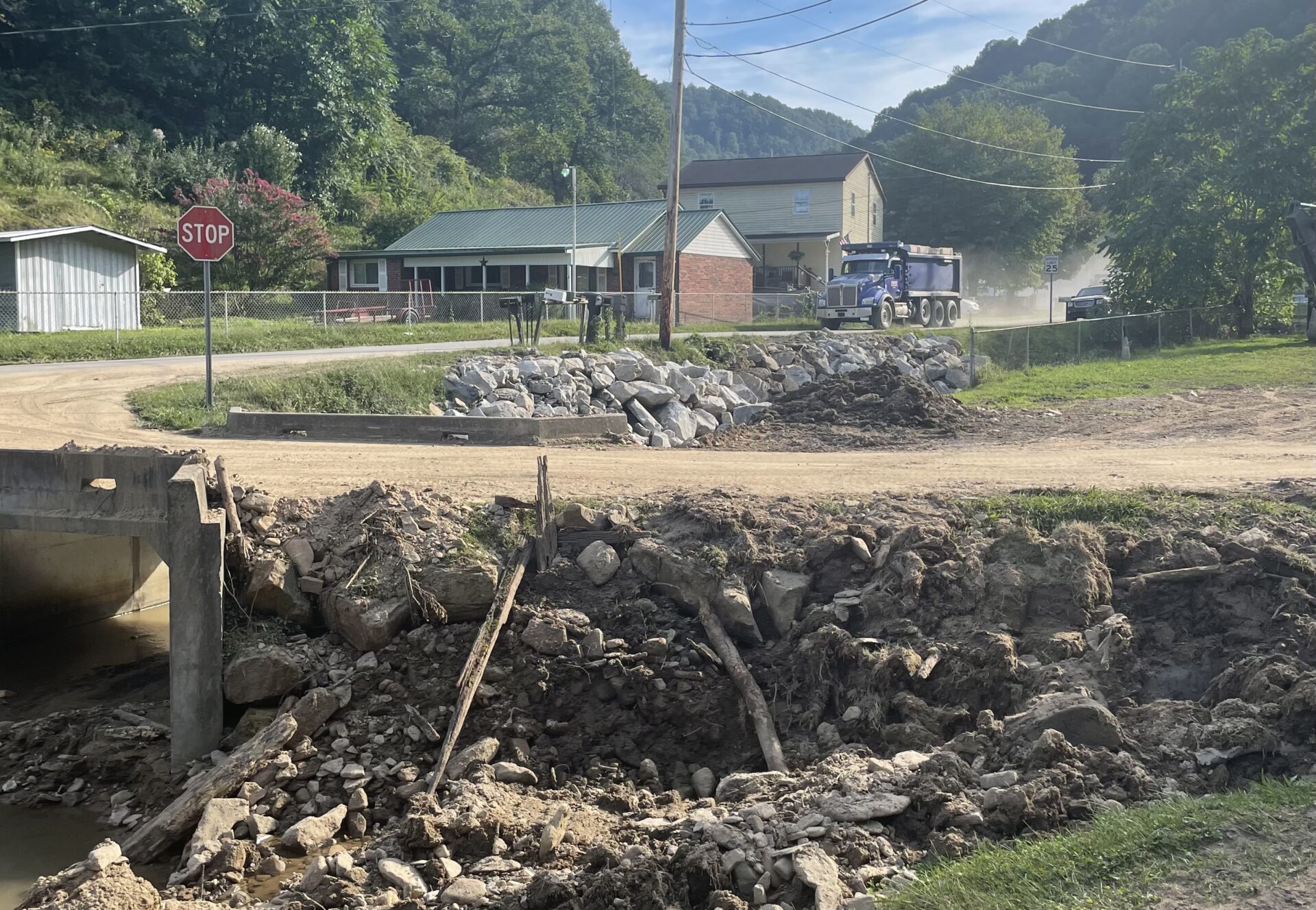The Kanawha County Commission allocated more money to aid flooded communities and is working with state and local officials to secure more.
Fifty-thousand dollars was approved for West Virginia Voluntary Organizations Active in Disaster, or VOAD, to help rebuild personal bridges that were destroyed in the flood. Executive Director Jenny Gannaway requested $40,000 but the commission decided to give more.
“We’ve got families in hotels that we’re providing them. One in particular is a young mom with two small children. Her house was destroyed,” Gannaway said at the meeting. “So we’re trying to help her get into a rental property, close to her job. She lost her car and everything. So we are helping families like they get back in.”
Commission President Kent Carper said this is a one-time payment, but that this is an organization he is happy to continue to support.
“Two reasons why we’re going to do this, I think I’m speaking for everyone. Your reputation is just excellent,” he said. “You just know your business, and you’re effective at getting things done.”
The commission estimates the county has spent $200,000 so far and is putting in a request for reimbursement from the state. Carper said he is hoping to receive support from the state.
“I got several of these nice emails from the legislature, from senators wanting to know what they can do,” Carper said. “Well, they can pay the bill!”
The damage assessment process is ongoing. Homes, bridges, creeks, churches, fire stations, and roads were damaged during the flood. Eight homes were destroyed. Individuals and local communities are struggling to pay for the damage.
Federal aid from the Federal Emergency Management Authority (FEMA) could be on the way if the disaster qualifies. Commissioner Lance Wheeler said that they are working to gather and submit that evidence.
“I’ve been working with the state emergency management,” Wheeler said. “They tell us that they believe these numbers are very close to passing that threshold. And we’re positive at this moment that we will get that FEMA declaration. However, you never know how FEMA is going to operate until they do. So we’re just trying to do as much as possible collecting evidence.”
The commission is asking residents in areas affected by the flood to continue to fill out FEMA surveys because they will help their communities qualify for aid. One hundred and sixty-seven have been collected so far. Surveys are available online, by QR code, and there are paper surveys available at the VOAD center in Quincy.
The commission also voted to extend debris pick up to Friday, September 15 and allocated another $100,000 to the effort. During the weekend, the hours for debris clean-up will be 8 a.m. to – 2 p.m., and during the week 8 a.m. to- 3 p.m.
Wheeler said this is needed because residents are still working to clean out, and around, their homes.
“You know we have to remember that this isn’t just trash. This is personal belongings,” Wheeler said. “This is things that people had in their home, loved items that they had and now they have to get rid of,” Wheeler said.
